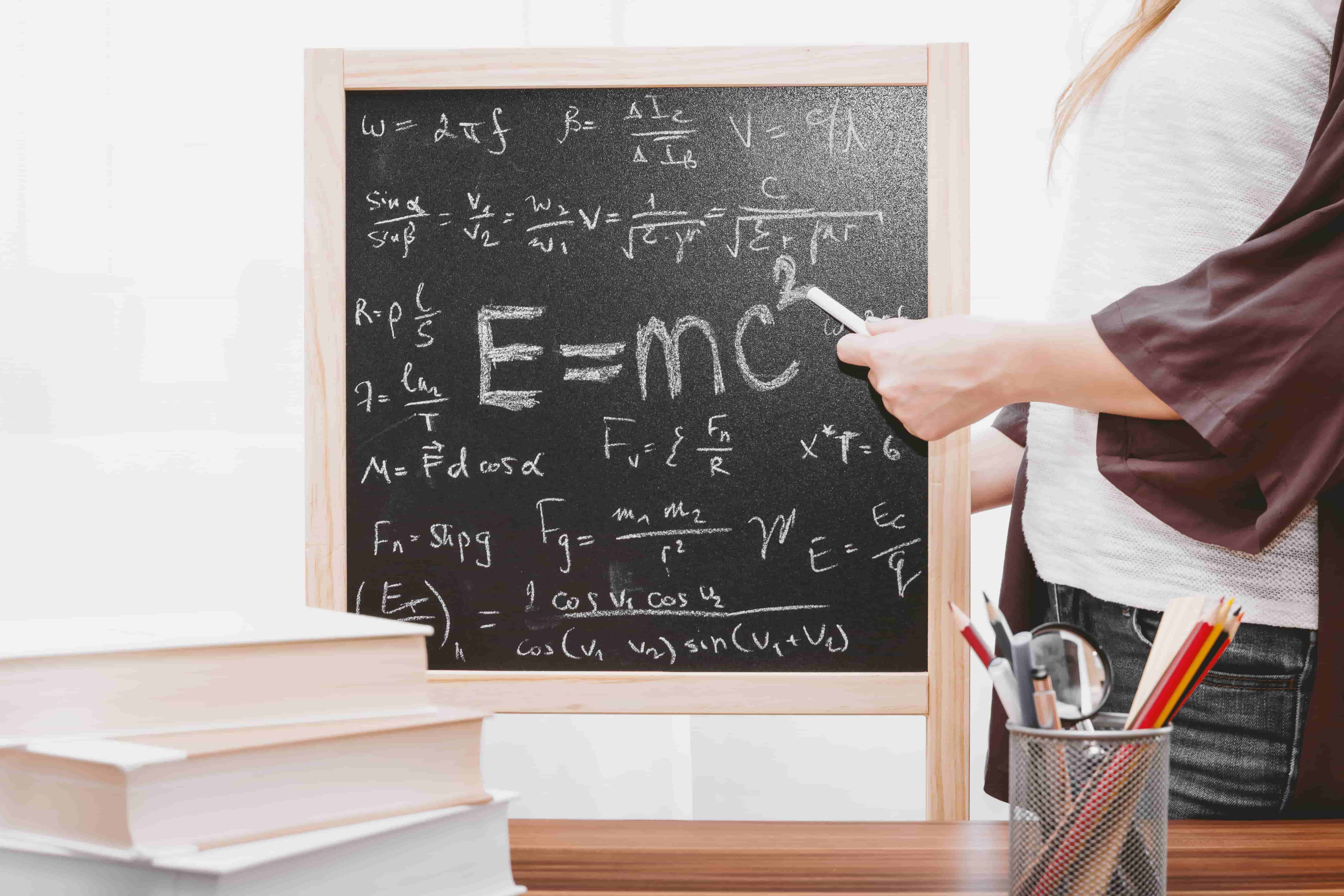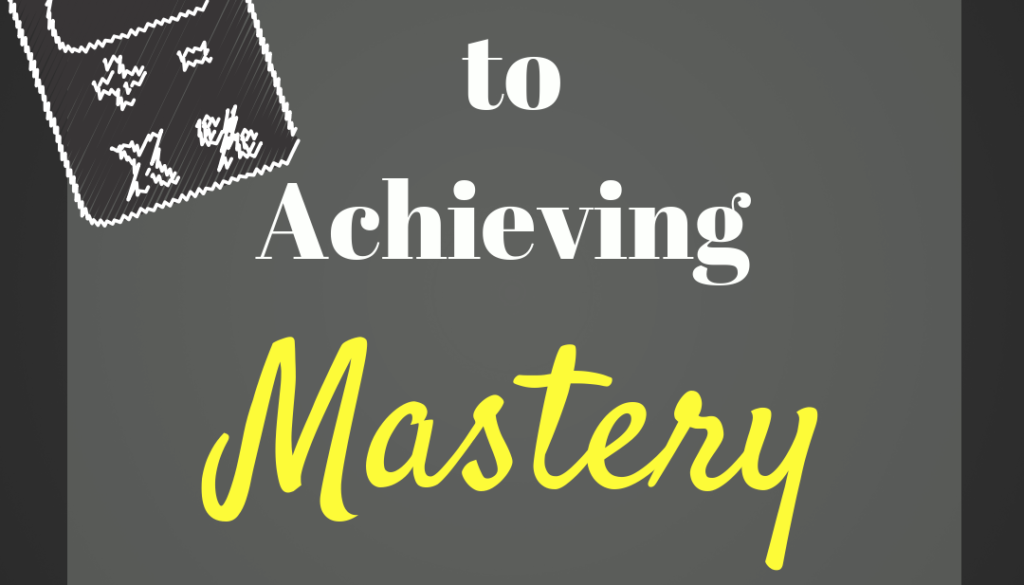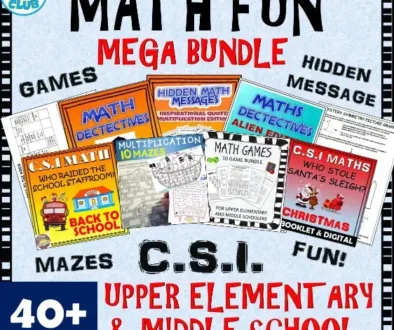The Secret to Achieving Mastery in Math
The Secret to Achieving Mastery in Math
Guest Post Written By: Gretchen of Always A Lesson
Students come to school to learn and it is the job of educators to ensure that happens when students are in their classroom. The goal in helping students learn is to achieve proficiency in the subject taught so that they have a firm foundation as they continue on in their journey in learning and life. For many educators though, they desire more than proficiency for their students and work hard to ensure that every student achieves mastery instead.

Skill Acquisition
Proficiency takes time and repetition in the short term where mastery takes time and repetition in the long term. It is the difference between knowing something today and knowing something every day. Although proficiency will ensure students are prepared for the next grade level, mastery ensures students take that knowledge base with them into their future.
Old Instructional Design
In order to achieve mastery for all students, teachers have had to ditch their past instructional habits; ones that had dismal results because students struggled in Math and had a lack of motivation to get better at it. The old method included this series of instruction:
- Teacher used direct instruction to deliver a math concept one time to all students
- Students repetitively practiced the concept independently in and out of class
- Teacher provided an assessment on the concept and recorded student scores in the grade book
- Teacher moved on to a new concept to repeat this same series of instruction all over again
It is no wonder that old method of instruction did little to motivate students- it was dry and boring. Students that were “good” at Math continued to be good at Math and those that were “not good” at Math continued to not be good at Math. Proficiency was barely reached, meaning mastery was nowhere in the picture.
New Instructional Design
To overcome the obstacle of low student performance and motivation in Math, teachers are now switching up their instructional method to better meet the needs of all students. The new method includes this series of instruction:
- Teacher provides pre-assessment to students to determine the degree to which they understand the soon-to-be taught concept
- Teacher uses the pre-assessment data to create a personalized lesson plan tailored to the knowledge level of their current students
- Teacher delivers a direct instruction mini lesson that includes modeling of a mathematical skill, followed by guided practice with students
- Students repetitively practice the mathematical concept independently while the teacher provides differentiated support as needed
- Option A: Teacher conferences 1:1 with students on current concept
- Tip– Be sure to keep a record for each student so that you can recall what skill you worked on previously, set goals, and make note of any pertinent details (ie. common mistakes)
- Option B: Teacher uses small group instruction to reinforce old and new math concepts taught
- Tip– Keep groups intimate, ideally 2-5 students, so that students receive targeted instruction on their current struggles or weakness.
- Tip– Reference informal and formal data points to formulate student groupings based on similar struggles
- Tip– Keep a record of who you met with, when you met, and what you worked on to help you plan future groups and recall pertinent details of those meetings
- Option C: Teacher designs learning centers with review activities for repeated practice for all students, including an accountability assignment to inform the teacher of student performance
- Tip– Create hands-on activities (or have math tools on hand) for tactile learners
- Tip– Only put previously taught skill activities in centers so students need little direction from the teacher
- Tip– Implement an accountability system that requires students to demonstrate their learning (ie. show their work, write a journal entry, fill out a survey, etc.)
- Teacher provides post- assessment (similar to the pre-assessment formatting and questions) on the mathematical concept to showcase student growth
- Teacher moves on to a new concept to repeat the same series of instruction all over again
- Option A: Teacher conferences 1:1 with students on current concept
This new instructional method is much more involved than the previous technique, allowing teachers to both formally and informally collect data points on student performance throughout a single lesson and then adjust their support in the moment as needed. The teacher is now more in tune with student skill levels and can create learning experiences to address any and all deficits.

Mastery in the Making
This new series of instruction has been extremely successful in not only overcoming the previous obstacles of student performance and motivation, but also in turning student proficiency into mastery. So, what is the secret?
For starters, it is clearly not dry and boring like the old method of instruction due to the numerous opportunities students have to practice mathematical skills in a variety of settings. Although students might be practicing the same skill repetitively, the novelty of the way in which they are practicing (small group, one-on-one, whole group, centers, etc.) is exciting and motivating. Therefore, students that were once “good” at Math got even better and students that were “not good” at Math got to experience many moments of “getting it.”
Secondly, educators know that differentiation ensures a multitude of learning needs are met during classroom instruction. But, this new teaching approach adds in one more important layer other than simply differentiating lesson plans. By moving beyond students practicing one mathematical concept in isolation before moving on to the next one, students are now practicing multiple previously learned skills simultaneously.
This new teaching approach is called ‘spiraling’ instruction. This means that teachers circle back (like a spiral) to old content while adding in new content to keep all skills fresh in students’ minds. Since students are getting multiple opportunities to achieve mastery, it increases their competency and confidence in Math.

In efforts for educators to recall the secret (and all of its instructional components), the reminder below can be helpful:
S-mall group instruction
P-roficiency then mastery
I-ndividualized instruction
R-eview of past skills
A-dditional practice of concepts
L-ong-term strategy for achievement
As with learning any new skill, practice is essential. With the spiraling instruction approach, students get plenty of practice throughout the school year on all of the mathematical skills required to progress to the next grade level and beyond. The thorough review and extended practice opportunities provided by this model result in a deep understanding of mathematical concepts for all students.
What tips can you add for how to spiral skills in the classroom?




